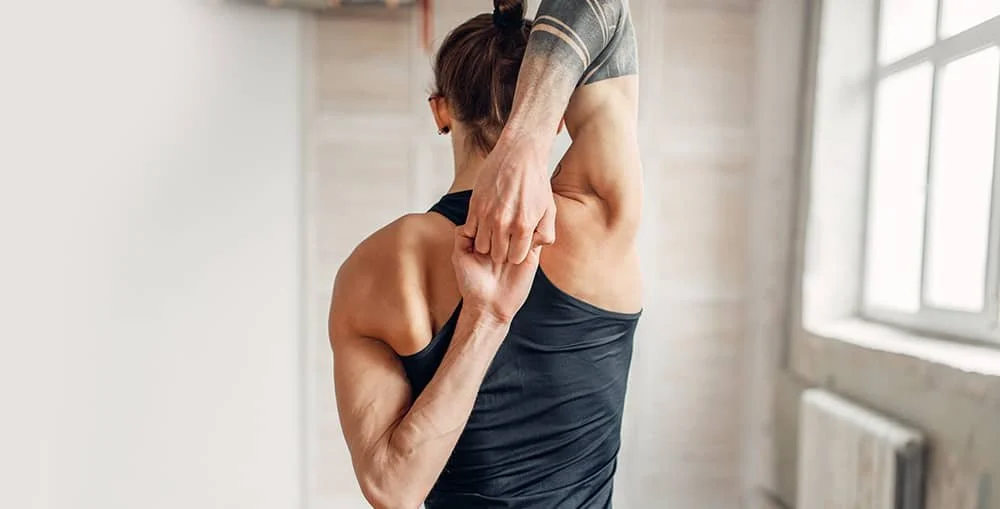Flexibility and Joint Mobility: Improve Your Range
Table of Contents Show
Welcome to a world of movement and vitality! Aging is a natural part of life, and with it comes a multitude of changes in our bodies. One aspect that often goes unnoticed or even overlooked is the gradual loss of flexibility and joint mobility. It's a topic that many of us may not have given much thought to, especially when we were younger and full of vigour.
But here's the thing: understanding and nurturing our flexibility and joint mobility is essential for maintaining an active and fulfilling lifestyle as we age. In this article, we'll explore the importance of flexibility and joint mobility, dispel common misconceptions, and provide you with practical exercises to incorporate into your daily routine.
So, whether you're new to the idea or have never considered it before, join us on this journey to discover the power of flexibility and joint mobility and unlock a world of movement and vitality you never knew existed. Get ready to embrace the joy of being flexible and mobile, no matter what age you are!
Flexibility vs. Joint Mobility
Flexibility and joint mobility play crucial roles in maintaining our physical fitness and overall well-being. Many people often confuse the two terms, assuming they are interchangeable.
However, understanding the difference between flexibility and joint mobility can significantly benefit your overall physical performance and enhance your quality of life. This article will explore the distinction between these concepts and discuss how you can improve your flexibility and joint mobility.
Flexibility refers to the ability of muscles or muscle groups to lengthen through a range of motion passively. It primarily focuses on the extensibility of muscles and tendons, allowing for a broader range of movement without pain or stiffness.
On the other hand, joint mobility relates to the active movement of a joint through its range of motion. It considers the flexibility of muscles, the joint's mobility within its capsule, and the motor control aspect governed by the nervous system.
Importance of Flexibility and Joint Mobility
Improving flexibility and joint mobility is essential for athletes, fitness enthusiasts, and individuals of all ages. These aspects contribute to better movement efficiency, reduced risk of injuries, enhanced athletic performance, and overall functional abilities.
By incorporating exercises and techniques that target flexibility and joint mobility into your routine, you can experience significant improvements in your physical capabilities.
The butterfly stretch for those tight thighs
Flexibility Exercises for Improved Joint Mobility
Ankle Mobility:
Ankle dorsiflexion and plantar flexion exercises can enhance balance and stability while performing activities such as squats and deadlifts. Follow these steps:
Stand tall next to a wall and place one hand on it for support.
Slowly rock forward onto your toes (tip-toe position) and then rock back onto your heels, lifting your toes off the ground.
Repeat this movement ten times.
Walking Hip Openers:
Promoting hip joint mobility is crucial for maintaining balance and stability. The following exercise can help:
Stand tall with feet hip-width apart and firmly planted on the ground.
Lift your left knee to your chest and make a circle with it, moving it up, across your body, out to the side, and down.
Repeat this movement ten times, then repeat the sequence on the right side.
Thoracic Spine Windmills on Floor:
Good mobility in the thoracic spine improves arm movement and overall upper-body rotation. Here's an exercise to enhance thoracic spine mobility:
Lie on the floor on your side with your knees and hips bent at a little over 90 degrees.
Rest your bottom leg and extend your top leg on a foam roller or towel.
Extend both arms straight out in front of your body and slowly lift your top arm, rotating it away from you.
Hold this position for three seconds, then bring it back to touch your other hand.
Repeat this exercise five times on each side.
Shoulder Pass-Through:
Warming up the shoulders and improving their mobility can help prevent injuries and optimize your form. Follow these steps:
Stand with your feet shoulder-width apart, holding a bar or dowel in front of you with a wide grip.
Keeping your arms straight, slowly raise the bar overhead and behind you, allowing it to pass over your head and down toward your lower back.
Reverse the movement and bring the bar back to the starting position.
Repeat this exercise for 10-12 repetitions.
Consider the Cat-Camel Stretch to promote flexibility
Cat-Camel Stretch:
This exercise helps improve mobility in the spine and promotes flexibility in the back. Follow these steps:
Begin on your hands and knees, with your hands directly beneath your shoulders and your knees beneath your hips.
Slowly round your back, push it toward the ceiling, and tuck your chin toward your chest (cat position).
Then, slowly drop your belly toward the floor, lift your chest and gaze upward (camel position).
Repeat this movement 10-12 times, smoothly transitioning between cat and camel positions.
Another great stretch is the Piriformis Stretch
Piriformis Stretch:
Sit on the floor or on a yoga mat with legs extended straight in front of you.
Bend your right knee and cross it over the left leg, placing the right foot flat on the floor outside your left knee.
Keep your left leg straight and your foot flexed. Align your right knee with your left foot, forming a "figure 4" shape with your legs.
Sit up tall, engaging your core to maintain a neutral spine. Place your right hand on the floor behind your back for support.
Inhale deeply, and as you exhale, gently press your right knee toward the floor using your left hand.
Maintain the stretch for 15 to 30 seconds, breathing steadily. Slowly release, and repeat the stretch on the other side.
Aim to perform the stretch 2-4 times on each side, alternating between left and right.
The Conclusion
Flexibility and joint mobility play crucial roles in our overall physical well-being. By understanding the difference between flexibility and mobility, we can better appreciate their individual benefits.
Flexibility refers to the ability of our muscles to lengthen passively through a range of motion, while mobility pertains to the active movement of our joints through their full range. Various factors, such as muscle strength, motor control, and connective tissue health, influence both aspects.
Regularly incorporating flexibility exercises into our routines can enhance joint flexibility, muscle pliability, and overall range of motion. Dynamic warm-up exercises, like the ones mentioned in this article, have shown promising results in improving performance and reducing the risk of injuries. Each exercise targets specific areas to enhance joint function and overall movement quality, from ankle mobility to thoracic spine windmills.
It's important to note that individual differences and considerations should be considered when engaging in flexibility and mobility training. Consulting with a healthcare professional or a qualified fitness expert can provide personalized guidance and ensure the exercises are appropriate for your specific needs and capabilities.
By prioritizing flexibility and joint mobility, we can experience improved movement, enhanced athletic performance, and a reduced risk of pain and injuries. Remember, the journey towards better flexibility and joint mobility is a lifelong endeavour, and consistent practice is crucial in maintaining and progressing these attributes. Begin today with just the first step towards a more flexible and mobile you, and enjoy and start to see the benefits it will bring to your overall health and well-being.
If you have any further doubts or questions regarding this subject or another treatment, contact one of our experienced Acupuncturists or Registered Massage Therapists here at West End Wellness Clinic. You can either give us a call or make an appointment.
Disclaimer: Please remember this article is for informational purposes only and should not replace professional medical advice. Please consult a healthcare provider or someone with the correct qualifications before starting any new exercise or treatment program.

